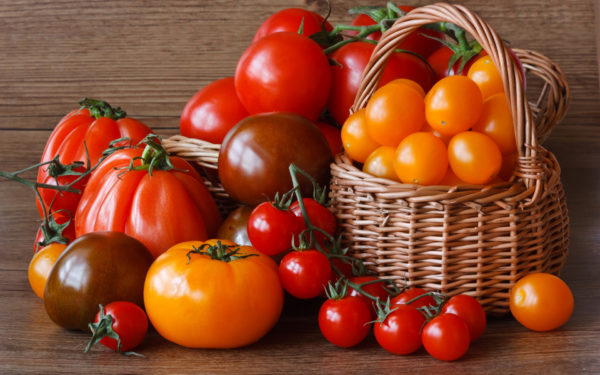
Siberia is famous for its inconsistent summer temperature, which during the day can be quite high, and at night it can drop to frost. Such differences do not benefit the standard species of nightshade, so farmers are constantly trying to improve the existing species. Tomatoes of new varieties are constantly appearing, which were bred by Siberian breeders and plan to plant them for 2018. These varieties are resistant to temperature changes and are aimed at growing in areas with a short summer.
All new varieties of tomatoes of Siberian selection, proposed for planting in 2018, were tested in authentic conditions. Therefore, it is known how to plant them most effectively, and what taste and other qualities they have. Most varieties are early ripe, but there are several that are closer to mid-ripening. They are advised to keep in a film greenhouse for at least the first few months.
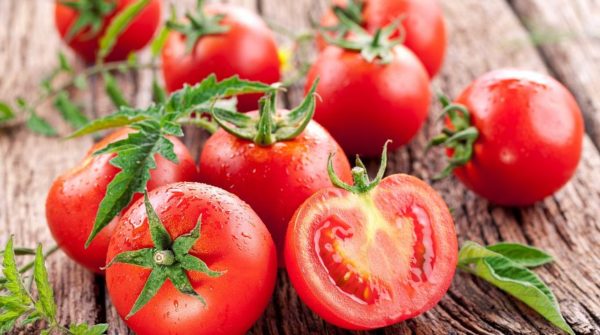
Siberian Express
Like all tomatoes that grow well in Siberia, this variety belongs to a precocious variety of plants. It gives rounded fruits weighing 130-150 grams. With rather poor lighting, it has a high yield and fruiting period, which is why it is ideal for severe Siberian conditions. Also, the plant was bred in order to withstand systematic and sharp temperature changes, which often replace each other during the day.
Fruits are dense, have a slightly pronounced ribbing, according to the number of nests they belong to small-nesting ones. Due to the peculiar hardening and density, the peel of the tomatoes is rather dense, which allows them to maintain their qualities for a long time. The fruits are used on salads and for preserving whole berries.
The first fruits fully ripen on 80-85 days after germination of the sprouts, and continue to bear fruit until the autumn frosts. They give yields abundant for Siberia - an average of 4 kg of tomatoes is removed per square meter.
Sprouts are obtained by the seedling method, burying seeds in peat pots to a depth of 1 cm. They do this in late March and early April, so that the plants are ready for the end of spring frosts. Shoots appear after 3-5 days, and after that it is required to wait for the appearance of 1-2 real leaves. After their appearance, a pick is made.
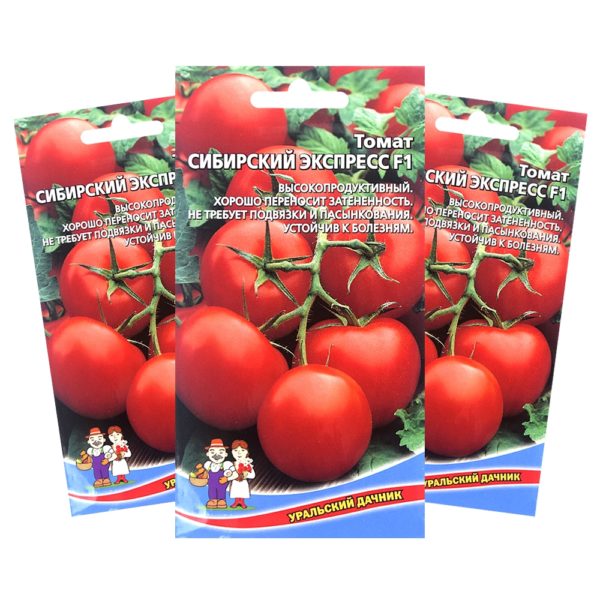
Siberian precocious
A new variety of Siberian selection tomatoes has a small gap compared to other plants between the first seedlings and the full ripening of the fruit - 114-116 days.
Characteristics:
- taste is ordinary;
- weight varies from 60 to 110 grams;
in shape they can be round or slightly flattened horizontally; - by the number of nests, the variety belongs to multi-nest, because in one fruit there are from 5 to 12 chambers;
- have a large amount of solids, which is why they are well suited for the preparation of juices and sauces;
- the height of the bush varies from 30 cm to 1 m.
For cultivation, a seedling technique is used, in which the seeds are laid in containers in mid-February, early March. For growing in closed ground (greenhouse), the temperature that occurs after the first decade of May is enough. To land in open soil, weather is required, which usually happens from mid-June or early July. Before any planting, it is necessary to harden the plants.
Tomatoes grown in a greenhouse have a higher growth (up to 1 meter), while fertility increases. Up to 1-1.2 kg of berries are removed from one bush, and up to 10 kg from a square meter. In this case, the fruits are softer and worse lying than those that were grown in the open ground.
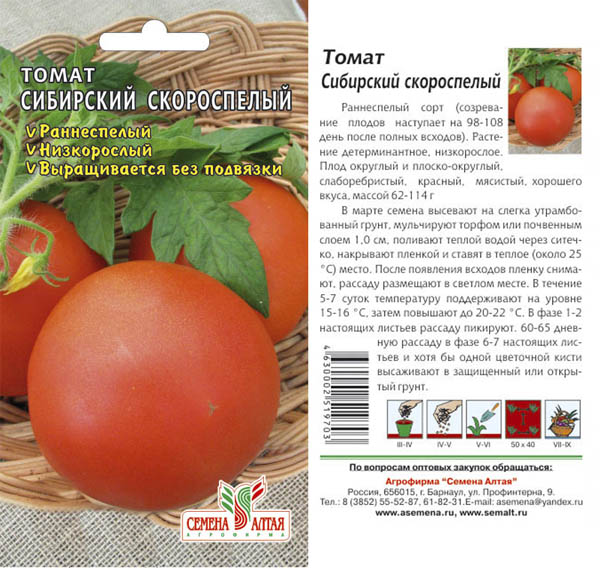
King of Siberia
The plant is indeterminate, so constant efforts are required to prevent all nutrients from growing instead of bearing fruit. Also, the plant needs additional support. It is carried out using tying. An additional measure, which must be carried out continuously, is stepchildren. After all, the greatest yield is obtained from a plant that has no more than 2 stems.
Characteristics:
- The mass of fruits varies depending on whether they grow below or above. Those located in the lower section can reach up to 500-600 grams; for the upper ones, 300-350 grams are considered normal weight.
- The pulp is fleshy and has a rich taste.
- The color in the ripe state is yellow, with a slight orange tint, which is ideal for allergy sufferers and young children.
- Productivity from 1 plant can reach 3.5 kg, if all conditions have been met and fertilized. From 1 square meter they harvest up to 12-14 kg.
- The amount of sugars in the pulp reaches 7%, which is significantly higher than that of conventional varieties.
- Fruits are multi-nest species, and contain 7-15 chambers (depending on the size of the berry).
- It has high resistance to many diseases affecting tomatoes, so it does not require preventive treatment with pesticides. Thanks to this, the fruits are more useful.
- In height, the variety does not exceed 1.5 meters in open soil, and in a greenhouse can reach 2.5 meters.
Planting in peat cups is done 60-65 days before the plants need to be planted in open ground and 40–45 in a greenhouse. The variety does not require special care, only in arid areas and on sandy soils it is necessary to water it regularly.
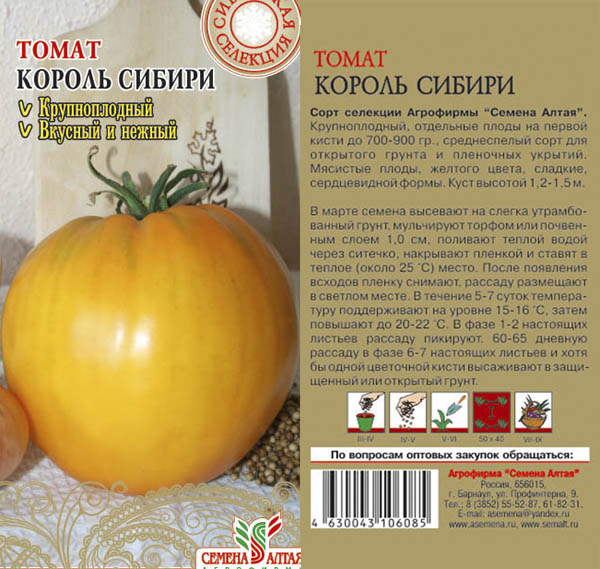
Big Mama
A new tomato variety of Siberian selection, ideal for planting in 2018. It has large fruits and a stable stem, which allows you not to tie it. The plant has a symmetrical arrangement of branches, and the peduncle well holds heavy fruits, which leads to the declination of the lower branches under their weight. Therefore, it is exceptionally good that the tomato is quite low, and does not exceed 60 cm in height.
Characteristics:
- One inflorescence gives up to 6 fruits at a time.
- The variety belongs to early ripening, the fruits begin to redden on 80-85 days.
- The weight of the fruit varies from 200 to 400 grams, depending on the illumination and the amount of nutrients in the soil.
- Fruits are multi-nest, with 6-8 chambers and a small amount of seeds.
- The berries are large, rounded, sometimes slightly flattened horizontally.
- Ripe tomatoes have a bright red shade of the skin, without bright spots.
- The skin is very dense, which prevents cracking of the fruit during sudden frosts. But at the same time it has a small thickness, which is why it is easily removed from the pulp.
- Fruits have a long shelf life, and with a long lying or transportation do not lose their properties and appearance.
- The variety tolerates most of the diseases that solanaceae are susceptible to.
Seeds are laid in containers for seedlings in late March and early April. After that, in early June, you can plant seedlings in closed ground. And for open soil, you need to wait until the middle or end of the month. To increase productivity, it is recommended to grow this variety in greenhouses, where up to 10 kg of berries can be collected from 1 square meter.
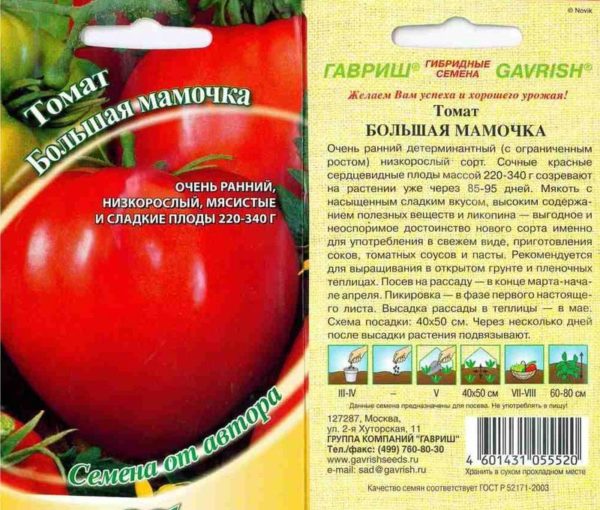
Barbara
The variety bears fruit well in greenhouse conditions, but can also be grown outdoors. The plant is indeterminate, and it must be tied up. It is also desirable to limit the growth, otherwise it can reach 180 cm in the greenhouse. It develops up to 150 cm in open ground, but such growth is considered excessive, and farmers advise not to let it grow by more than 1-1.2 meters.
Characteristics:
- Varvara refers to mid-ripening varieties, and the first fruits can be removed on 110-115 days.
- The mass of the fetus is small, ranging from 50 to 80 grams.
- Berries have a rich taste, which is why they are appreciated.
- Tomatoes have a vertically elongated shape.
- Productivity is low, from one plant you can get about 1.5 kg, and from a square meter up to 5 kg.
- The fruits are fleshy, which is why they keep their shape well.
- Thanks to the dense skin, with proper care can lie until the very spring.
- The color of ripe fruits is bright pink, sometimes almost turning into red.
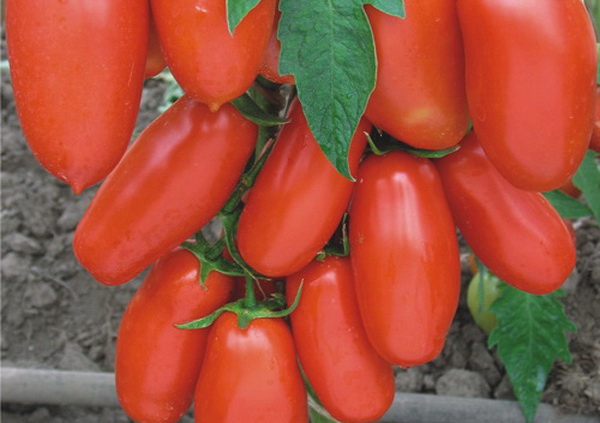
The plant is bred in seedlings, so the seeds should be planted 60-70 days before planting in open ground. At the same time, it is required to devote the last week to hardening the plants so that they do not wilt from a sharp change in climatic conditions.
Nobleman
The plant is mid-season, and the first ovaries can be removed after 105-115 days from the appearance of sprouts. Therefore, planting is carried out by the seedling method, which allows the owners of the plots to collect maximum yields. The variety is determinate, requiring pinching in the early stages. Best fruit plants with two stems.
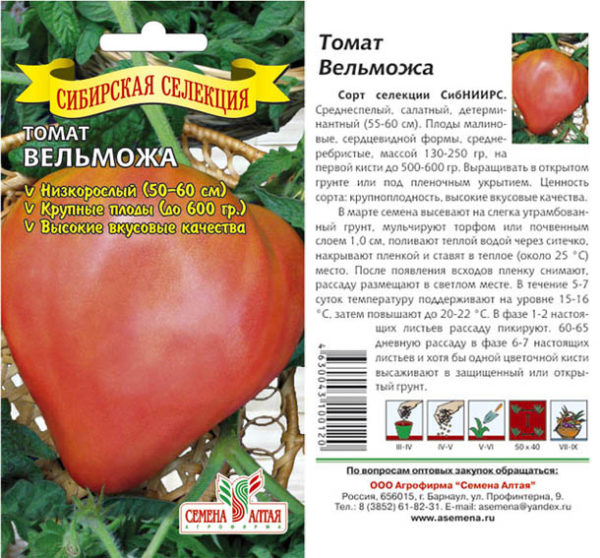
Characteristics:
- The height of the bush varies from 60 cm to 1 m, depending on where the plant is planted.
- The fruits are shaped like a heart.
- The weight of one berry is an average of 200-300 grams, and with proper fertilizer and film shelter can reach up to 0.5 kg.
- Fruits are multi-nesting; each tomato contains 6–9 isolated chambers.
- The tomatoes are fleshy, and if there were enough nutrients in the soil, then there is a distinct sugar flavor.
- Ripe fruits have a short shelf life, so you need to either eat them immediately or use them for canning.
- Productivity is quite high, from 1 square meter experienced gardeners get up to 8 kg of fruit.
- The plant is resistant to sharp changes in ambient temperature, but tolerates poor watering rather poorly. Therefore, you must constantly monitor the moisture content of the soil.
- The tomato variety is resistant to most diseases.
Planting seeds of this variety must be 60-65 days before the plants are going to be transferred to a permanent place. In this case, trellises should be prepared in advance for tying, otherwise large fruits can break one of the stems. Also, the plant will need 3-4 top dressing in open ground so that it gives the greatest amount of yield.
All varieties of tomatoes intended for Siberian open spaces respond well to cool regions. At the same time, they have a short period between planting and collecting the first results. But besides this, they can be used in other areas, because they are extremely unpretentious and have resistance to most diseases that affect nightshade. Therefore, such species will ideally take root in any household, most importantly, it is right to care for them.




 Low-growing tomatoes, without pinching: 5 of the most delicious varieties
Low-growing tomatoes, without pinching: 5 of the most delicious varieties Why tomato seedlings grow poorly
Why tomato seedlings grow poorly We grow a tomato in a shell
We grow a tomato in a shell Growing tomatoes without watering according to the method of Kazarin
Growing tomatoes without watering according to the method of Kazarin